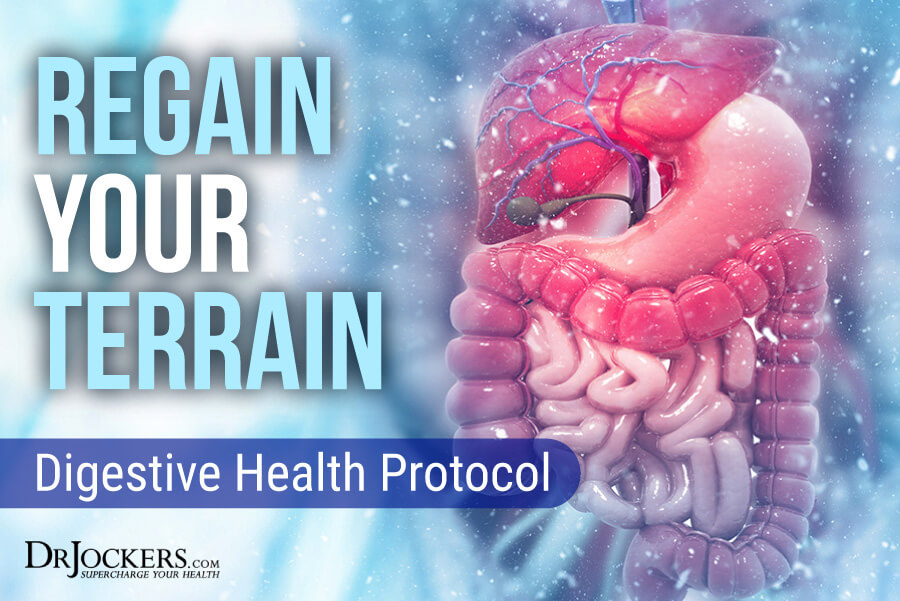
Regain Your Terrain Digestive Protocol:
Digestive disorders can be extremely embarrassing and debilitating. Conditions such as irritable bowel syndrome, small bacterial overgrowth (SIBO) and colitis are extremely common and can be hard to get under control.
What most people don’t understand is that the gut plays an enormous role in brain and emotional health, joint support, skin health, immune function and so much more! Many individuals never deal with digestive symptoms, in spite of many health problems that originated with intestinal breakdown.
Good health begins and ends with the health of your gut. If your gut is damaged or you have an abundance of pathogenic microorganisms it is impossible to be healthy. The gut must be addressed daily in order for one to live a lifestyle that builds health. The stool test I use looks in detail at the makeup of the gut and if parasites, yeast and/or bad bacteria are elevated and what the best anti-microbial agents are for this.
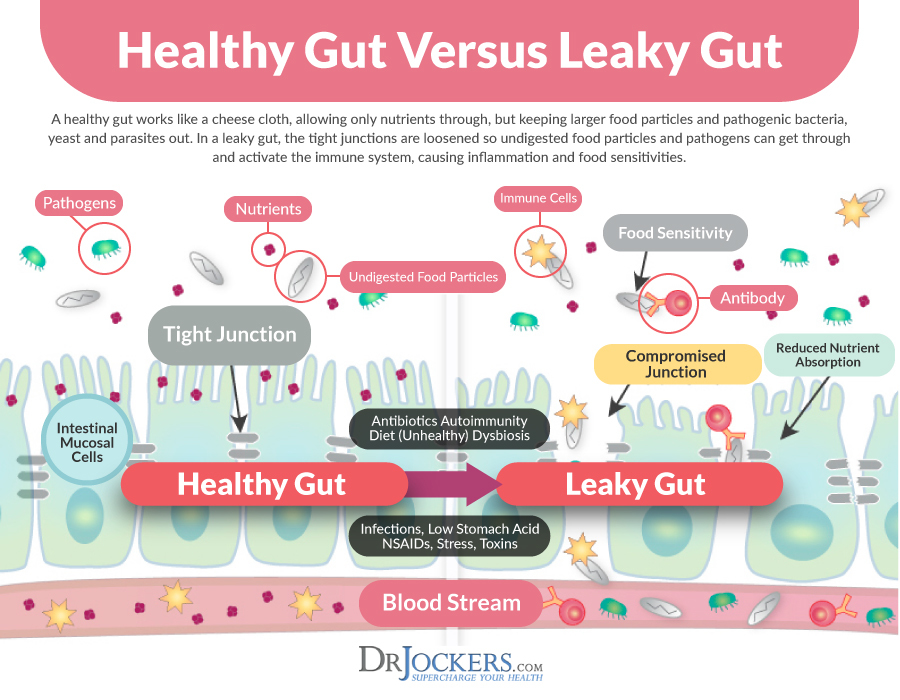
A Leaky Gut Results in a Leaky Brain
A leaky gut equals a leaky brain as the gut has a direct connection through the vagus nerve to critical centers in the brain. Chronic inflammation in the gut also creates an inflammatory process that lights up key centers in the brain such as the limbic system, basal ganglia and anterior cingulate gyrus.
The blood brain barrier is also weakened when the gut lining is weakened. So when the gut becomes damaged it opens up the blood brain barrier and makes it more permeable to toxins and circulating immune cells that create more inflammatory stress. When the key brain centers are hyperstimulated from chronic inflammation they create symptoms of anxiety, depression and negative thinking.
Leaky gut syndrome also damages regions of the temporal lobe that are associated with memory, language and temper control. Frontal lobe damage leads to poor attention span and hyperactivity. If you heal the gut you are about 60% of the way towards optimizing the brain.
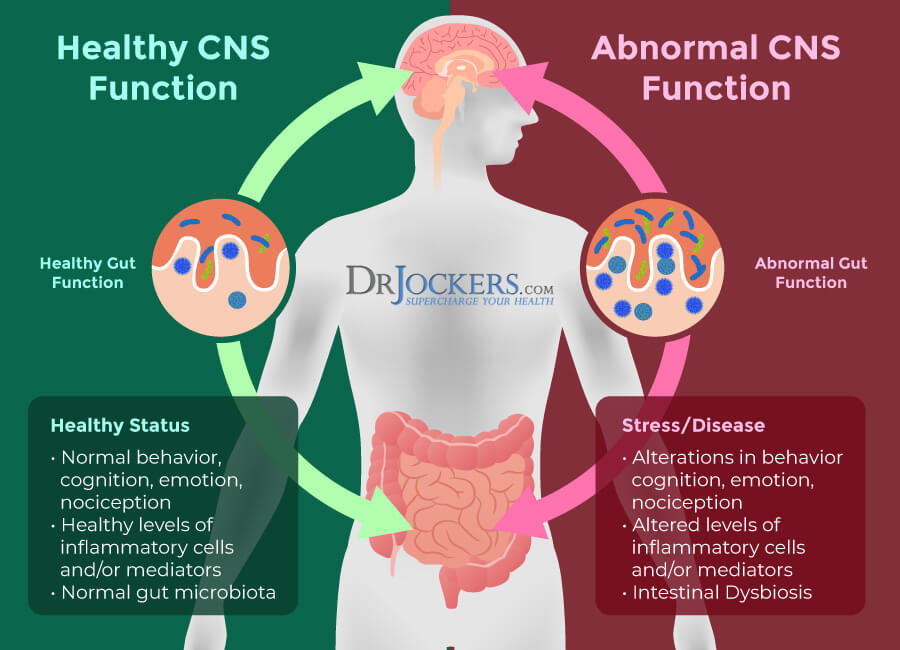
Breaking The Vicious Cycle
The goal of the reset phase of the Digestive Health Protocol is to break the “Vicious Cycle” as described by Elaine Gottschall in her book. She describes this cycle as a constant pattern of diarrhea, constipation, acid reflux, gas, indigestion, bloating, fatigue and many other digestive symptoms.
This vicious cycle is basically a process in which inflammatory damage to the intestines causes poor digestion which leads to bacterial overgrowth. These bacteria then release waste particles after consuming the undigested or partially digested food.
There are some microbiota who eat toxins and produce key nutrients such as B vitamins and vitamin K. There are other microbiota that eat valuable nutrients and product toxic material. When we have poor digestive processes, we create an environment that is ripe for the development of the type of microbiota that consume valuable nutrients our body needs and produce waste particles that affect our brain, stomach, intestines, liver, skin and many other organs.
10 Common Digestive Symptoms:
1. Gas
2. Bloating
3. Diarrhea &/or Constipation (less common than diarrhea)
4. Abdominal pain or cramping
5. Skin disorder such as eczema and rosacea
6. Diagnosis of irritable bowel syndrome or inflammatory bowel disease
7. Food intolerances such as gluten, casein, lactose, fructose and more
8. Chronic illnesses such as fibromyalgia, chronic fatigue syndrome, autoimmune diseases, diabetes and neuromuscular disorders.
9. B12 deficiencyas well as other vitamins and minerals (iron and magnesium are common)
10. Fat malabsorption
The Digestive Breakdown Process:
- Poor Digestive Processes due to poor diet, chronic stress, eating too fast or on the go, taking antibiotics, antacids or NSAID medications.
- Intestinal Inflammation: The inflammation of the intestinal region creates swelling and fluid (like a sprained ankle) and often increases the mucous content. This reduces nutrient absorption further.
- Overgrowth of Bacteria: The bad bacteria, yeast and sometimes parasites come in and feed on the undigested food particles.
- Bacteria, Yeast & Parasites Produce Toxins: The overgrowth of these microorganisms leads to high levels of waste material release that causes more inflammation and gas. This accounts for the stomach pain, distension, gas, change in bowel movement patterns (diarrhea and constipation), etc. that many experience.
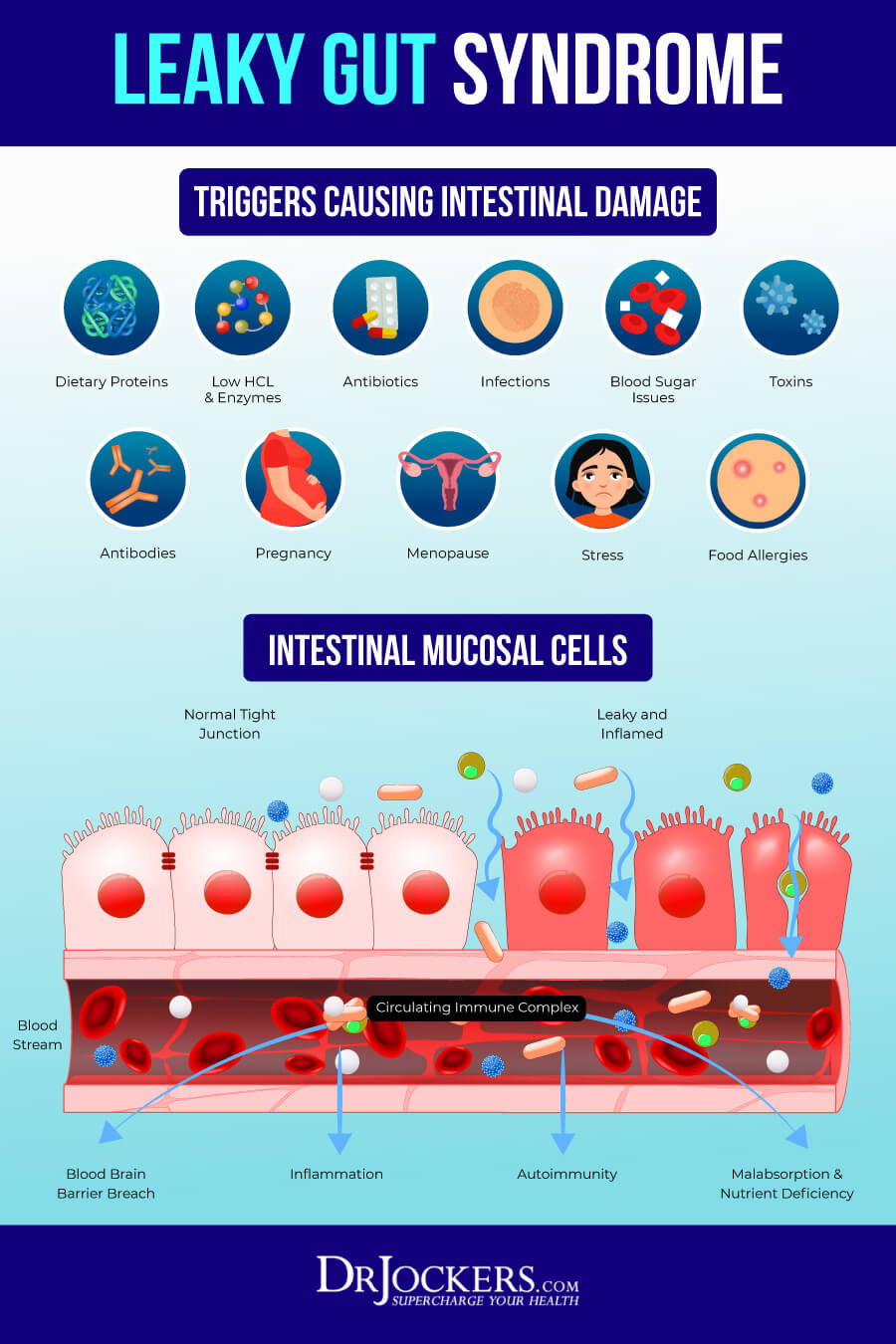
Healing the Gut:
It is vital to remember that when one has this sort of health condition, the intestines are inflamed. Think about this like a sprained ankle. If you are trying to walk on your sprained ankle, it will swell up even more and will never heal as it was designed too.
The same pattern works with your gut. If we are constantly challenging our gut with foods that are tougher on the digestive processes, than we are only irritating the injured intestines even more and we can forget about truly healing.
The only way to heal a sprained ankle is to stay off of the ankle. You need to rest it, ice it (reduce inflammation), maintain compression and keep it elevated. The best way to heal a damaged and inflamed gut is to reduce food stuffs that are going through it and use nutrients that help to soothe and de-inflame the gut lining.
The 3 Phase System to Heal the Gut:
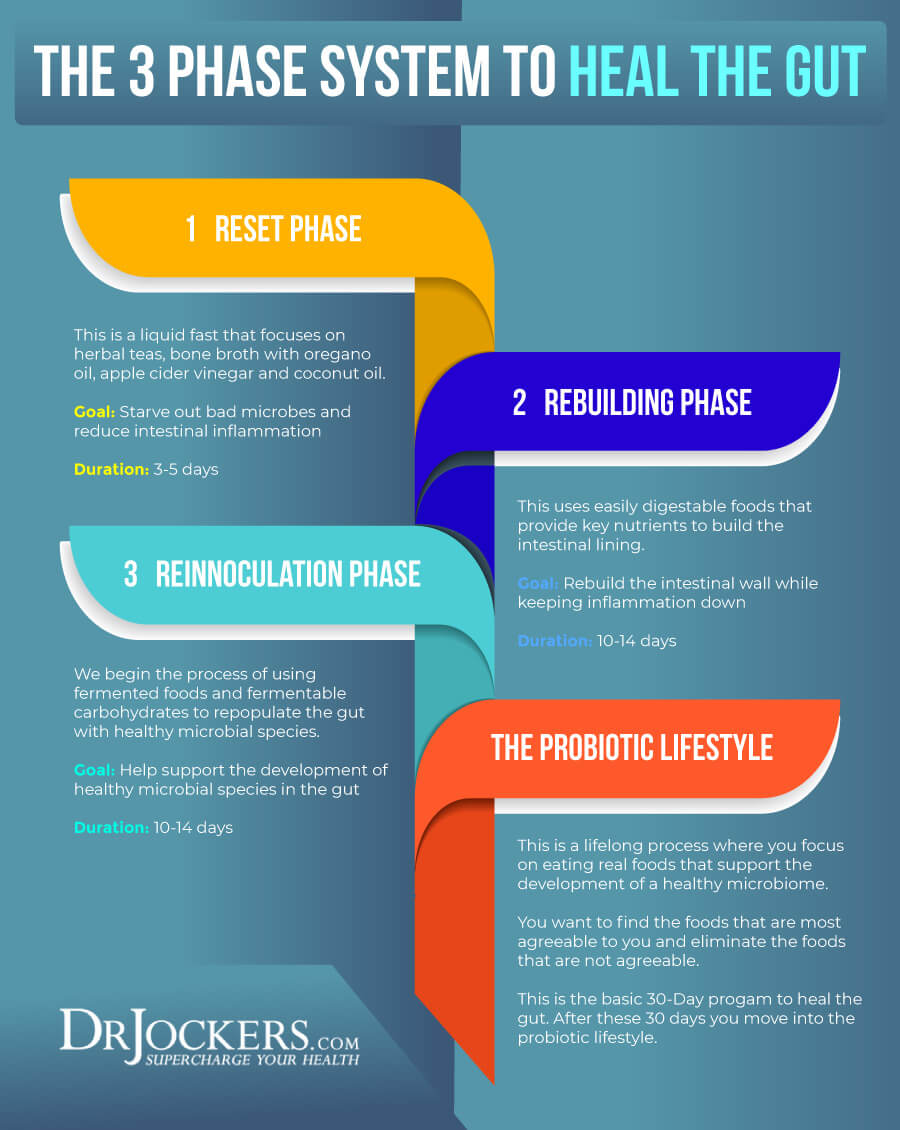
The Reset Phase:
The goal of the reset phase is to take stress off of the gut, reduce inflammation and heal the gut lining. When we eat solid foods, it takes a lot of digestive energy to metabolize and break down and causes a lot of wear and tear on the intestinal lining.
During the reset phase, we use a liquid diet in order to eliminate the mechanical stress and give the intestinal lining time to heal and repair. I compare this to a sprained ankle. If you had a sprained ankle and you continue to walk and run on it everyday it will not heal. It is really the same with our gut lining in that we need time without mechanical stress to heal and repair.

Reset Phase Protocol
The leaky gut protocol begins with a 3–5 day fast that is designed to take stress off of the gut, reduce inflammation and heal the gut lining. You can do a water fast or a bone broth fast.
Bone broth provides key nutrients such as collagen protein, glutamine, glycine, proline, etc that help to heal and repair the gut lining.
Bone broth also contains natural sodium and trace minerals which support the adrenals and help to improve energy levels. When you begin to do any form of fasting, it is common to feel very fatigued. Most people notice less fatigue and better energy and mental clarity doing the bone broth fast as opposed to a water fast. In some cases, where people have histamine intolerance, their body will not react well to broth. In these cases, we recommend doing a water and salt fast.
During the bone broth fast, you should aim to drink 40–60 ounces of bone broth. You are looking to do 8–16 ounces 3–6 times daily.

Homemade Bone Broth
The best bone broth is the broth that you make at home. You should simmer the bones and connective tissue for at least 10 hours. The longer it is simmered, the more collagen is released.
Bone broth can be made from any animal with bones, including fish, chicken, turkey, beef, lamb, bison and venison. The bones and connective tissue should be from organic, grass-fed animals or wild caught fish. Knuckles, chicken feet, and femur bones contain the most collagen.
Organic vegetables such as celery, onions, and garlic can be used in your bone broth, along with herbs like parsley, rosemary and thyme. Vegetables and herbs have healing properties and can add great flavor to your broth. You should use filtered water and add apple cider vinegar to help pull the nutrients from the bones and tissue.

Commercial Bone Broth
There are many commercial bone broths available. Premade bone broth comes in both liquid and powdered forms. My favorite brand of liquid premade bone broth is Kettle & Fire (here) which I have found to be the very best on the market. Use the coupon code JOCKERS at checkout to save 15%.
The reasons why I love Kettle and Fire is that they only use 100% organic and grass-fed animal bones for their broths. This is especially important as these animals are not exposed to pesticides and herbicides and do not bio accumulate a high toxin load.
Additionally, Kettle and Fire uses a slow simmering process to help extract the maximal amount of minerals and collagen from the bones. My family loves the flavor of their bone broth and we use it on a regular basis. In fact, Kettle and Fire was the first “food” we introduced to our little daughter Joyful when my wife was unable to produce enough breast milk to meet her needs.
Trouble Shooting the Reset Phase:
The most common complaints that I get during this phase is fatigue, nausea & cravings. This is very common on a fast.
Fatigue: Be sure you are adding some good salts to your broth. Himalayan pink salt is my favorite and you can also add a pinch of kelp powder which provides iodine and phytonutrients to the broth.
Since a fast is essentially a low-carb diet (or no carbs), the body excretes a lot of sodium. It is important to add a lot to your broth. The broth should taste mildly salty but good. Don’t over salt to where you dislike the flavor.
Nausea: This is very common during this phase. Using ginger or peppermint tea and fresh ginger that you can grate and add to the broth can be very helpful for reducing nausea.
Cravings: Whenever you deprive yourself of food you have a natural tendency to have food cravings. Your body and mind are so used to chewing food and consuming sugar, carbs and protein that cravings are a very natural result.
When we eat food, we release dopamine and endorphins. This creates a natural feel-great experience. This neurophysiological process creates a strong emotional component to eating.
If you experience food cravings, hang tough and realize that this is a normal detoxification process that will help you grow stronger physically, mentally and emotionally.

To Beat the Cravings:
- Have a Success Partner: This could be someone you are doing the program with or a supportive friend or family member. There job is to encourage you and hold you accountable to following through with what you set out to do.
- Journal: Journal about your feelings and how strong you are for overcoming these. Keep your journaling super positive…continue to reaffirm how you are an overcomer, a champion, that you rise in victory, etc.
- Have a Visualization Board and/or Process: You can create a vision board that shows you rising above challenges, feeling and looking great and experiencing life fulfillment. Keep looking at the board. Additionally, practice visualizing yourself strong and healthy. Vibrant life is flowing out of you! This will help to reenergize and refocus you to accomplishing your goal!
Think of this process as a short-term challenge that strengthens your self-control and will power and will lead to a more enjoyable and fulfilling life.
ReBuilding Phase:
The rebuilding phase is a combination of the GAPS diet and low-FODMAPS nutrition plan. We want to utilize this dual approach to get the best gut healing food based nutrients into the body with the least amount of stress on the digestive system.
The major theme here is to cook the vegetables well and consume them in soups and stews to continue to take in the enormous health benefits of bone broth.
Additionally, you can make berry shakes with coconut milk as a side option to give you liquid nutrition and variety.
Meat: Wild-caught Salmon, Organic Chicken, Turkey or Duck meat
Use Collagen protein powder
Fats: Organic animal broth (grass-fed beef, lamb, duck, chicken or turkey), coconut oil, coconut milk, grass-fed ghee and olive oil
Seeds: Pumpkin Seeds, Hemp Seeds, Chia Seeds & Flax Seeds
Fruit: Berries, lemons, limes, small amount of granny smith apple
Vegetables: Low-FODMAP group
Bamboo Shoots Bok Choy Butternut Squash
Carrots Chives Cucumber
Fennel Green Beans Green Onion (Scallion)
Ginger Lemongrass Kale
Olives Parsnips Radishes
Pumpkin Sea Vegetable Squash
Spinach Sweet Potato Zucchini
These are all good vegetables during this plan. During this phase these all (except cucumber and olives) need to be cooked in a soup/broth.
Small amounts of raw cucumber slices with apple cider vinegar are permissible. You may add olives to this.
Meals must be small and spread out throughout the day.
*If you have a history of kidney stones than you may have an issue with oxalates so it would be best to avoid using spinach and instead use a moderate amount of kale. *
Meals: Protein Shake with organic coconut milk, fresh or frozen berries (no more than ½ cup per shake) and 2 scoops of grass-fed collagen protein or Super Digest Protein.
Stews: Organic bone broth
Orange Vegetable: Carrots or Squash or Sweet Potato
Green Vegetable: Kale, spinach or green beans
Sea Vegetable: Small amounts of kelp, dulse or nori flakes
Meat: Organic (ideally pasture-raised) chicken, turkey or duck
You could also do wild-caught fish such as salmon
Herbs: Italian herbs such as oregano, basil, thyme, rosemary, etc.
Fats: You can add coconut oil and/or grass-fed ghee
*Avoid Any Ingredients you are allergic or sensitive too*
*If you are allergic to coconut than you can use hemp milk*

ReInnoculation Phase:
After the rebuilding phase you move into the reinnoculation phase where you consume lots of good fats and fermented and steamed veggies. This period lasts for fourteen days while you slowly add in new foods and see how the body tolerates them and what is going to support your microbiota and body the best. Be sure to watch out for how your body responds to the various higher FODMAP foods.
The only foods consumed on this part of the plan are small amounts of steamed cruciferous veggies like broccoli, cauliflower, cabbage, brussell sprouts, etc. Small amounts of steamed carrots can be nice too. You want to find the veggies your body is able to tolerate.
If you notice gas, bloating, cramps, heartburn, etc. after consuming something be sure to journal that and try it again the next day. If you notice 2 days in a row of this sort of reaction eating the same thing than stay off that particular food for a while (a month) before retrying.
Fermented veggies and beverages such as sauerkraut, kimchii, beet kvaas, kombucha and coconut water and coconut milk kefir are good foods to try in small quantities and see how your body tolerates these as well.
Using small quantities of chia and/or flax seed is really good for fiber and essential fats. Continue with coconut oil and you can also use coconut butter, coconut flakes and coconut milk in small quantities are good during this stage and make sure you apply all the rules above to see if they are disturbing your gut.
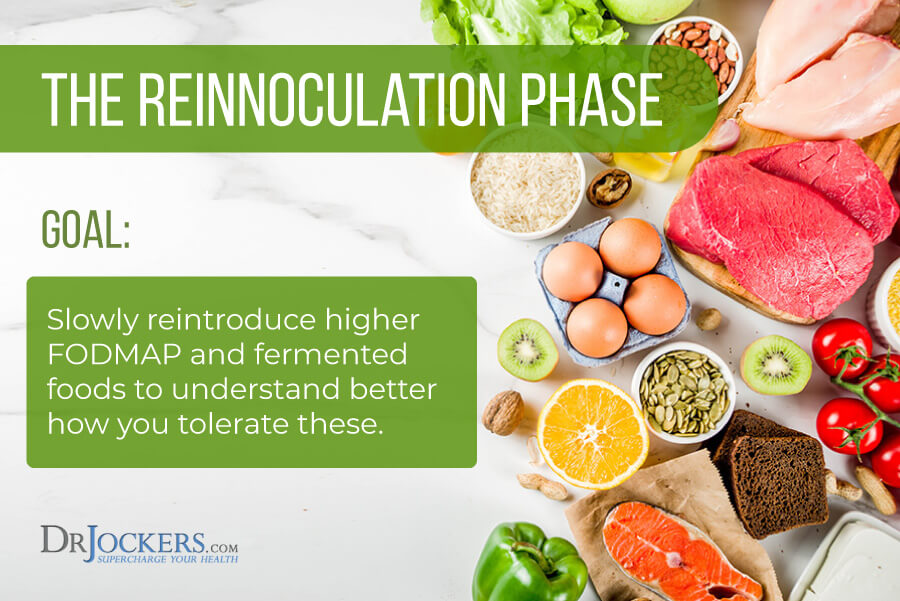
Best Foods For the ReInnoculation Phase
All foods that were tolerated well during the ReBuilding phase
Additional Foods to begin adding
Meat: Red meat – grass-fed beef, lamb, bison, venison
Fats: Avocado
Vegetables: Higher FODMAP group (Fructans and Polyols specifically)
Fructans: Asparagus, Beet root, broccoli, Brussel sprouts, cabbage, garlic, leek, okra, onion and shallots, chicory, dandelion, inulin.
Polyols: Cauliflower, mushrooms, avocado (most fruit is in this category). Sugar alcohol sweeteners are on this list but I would recommend waiting until the 2nd month to begin adding back those.
I recommend the first 7 days focusing on Fructans and the 2nd week focusing on Polyols
How To Implement:
You can choose to stick with soups and stews and if you are still having symptoms at this point, I would highly recommend it. If you are feeling a lot better, begin to have these vegetables steamed or sautéed.
Take one vegetable each day, such as asparagus and try it for lunch in a sautéed form with grass-fed ghee or coconut oil and herbs. Then try it with dinner steamed with grass-fed ghee or coconut oil and herbs.
Assess how you feel during the 24 hour period from consuming lunch on Day 1 to lunch on Day 2 and see how much gas, bloating, fatigue, etc. that you notice.
Rank This Food on a scale of 1–10

In the morning the following day, try some fermented food such as 1–2 tbsps of sauerkraut or kimchi or coconut water kefir. Use only one type of fermented food at a time and see how you feel in the next couple of hours that morning.
Use the same scoring chart for the fermented foods and drinks you are trying to see how they support your digestive system. For each type of fermented food I like to give 3-days and 3 different measurements. This is because when you first begin to add in fermented foods, there is often a little bit of digestive discomfort but as your body gets more used to them, they should help you feel very good!
If after a few days you are still having symptoms with the fermented foods try a different one. If the symptoms are very bad, take them out all together. This could be due to a histamine intolerance and you may need some histamine metabolism support.
Scoring Sheet For Foods:
The foods that digest in the 8–10 range are the main foods you want to be consuming on a daily basis. Foods that are in the 5–7 range you want to eat only on occasion. Anything ranging under a 5 should be avoided completely for another month.
Each month you can try a lower scoring food and see how you respond. If you are responding higher than previous than you may be able to consume that food either on occasion or if it scores high enough you may be able to have it regularly.

The Probiotic Lifestyle
This is where we get into the lifestyle phase of the program and we begin to incorporate more foods and test your tolerability to them. We want to create a nutrition plan that is full of real foods that are rich in prebiotic fibers, good healthy fats, clean proteins and antioxidants.
In this phase, you should be able to tolerate more fermented vegetables and tonics. Be sure to check how you are reacting to these foods. If you notice increased flare-ups of cramping, diarrhea, eczema, acne or fatigue try cutting down a bit. Overtime you will find the right amount for yourself.
Do the same with the various “fringe foods” that are not allowed on the first 30 days but have some health benefits if they are tolerated by the body.
These Fringe Foods Include:
Eggs (pasture-raised) Raw, grass-fed dairy Chocolate (Raw Cacao)
Nightshade Veggies Higher Oxalate veggies Nuts, Beans & Legumes
When or if you introduce any of these, be sure to use the same scoring chart above. If you notice you don’t feel as well on a consistent basis when consuming these foods than eliminate them for at least a month or two before trying to reintroduce them.
*If you notice you have an allergy or extreme sensitivity to any of these, it would be better to stay off of them for at least 6 months if not longer before reintroducing them. In some cases, you may never be able to tolerate one of these normally healthy foods.
PreBiotic Veggies:
You may also want to add in a lot of prebiotic veggies such as radishes, jicama, leeks, onions, artichoke, Dakon radishes, celery, cucumbers, carrots and tomatoes (if you can handle them – some people have more inflammation when they consume nightshades like eggplant, tomatoes, potatoes and bell peppers).
These foods provide great prebiotic fibers to help feed your microbiome and produce short chain fatty acids that keep your gut healthy and strong. As you improve the health of your gut you will begin to crave these vegetables.
A great meal is to have a bowl of guacamole with an assortment of these prebiotic veggies that help to feed and strength a healthy microbiome. You can also add in some flax crackers for more good fibers and a tasty crunch.
For some individuals, they thrive off of these prebiotics while others struggle with too many of them. Have keen awareness of how you tolerate them.
Ideally, these should give you more energy, better brain function and consistent bowel movements. If you notice a lot of gas and bloating and other unwanted symptoms that reduce your intake.
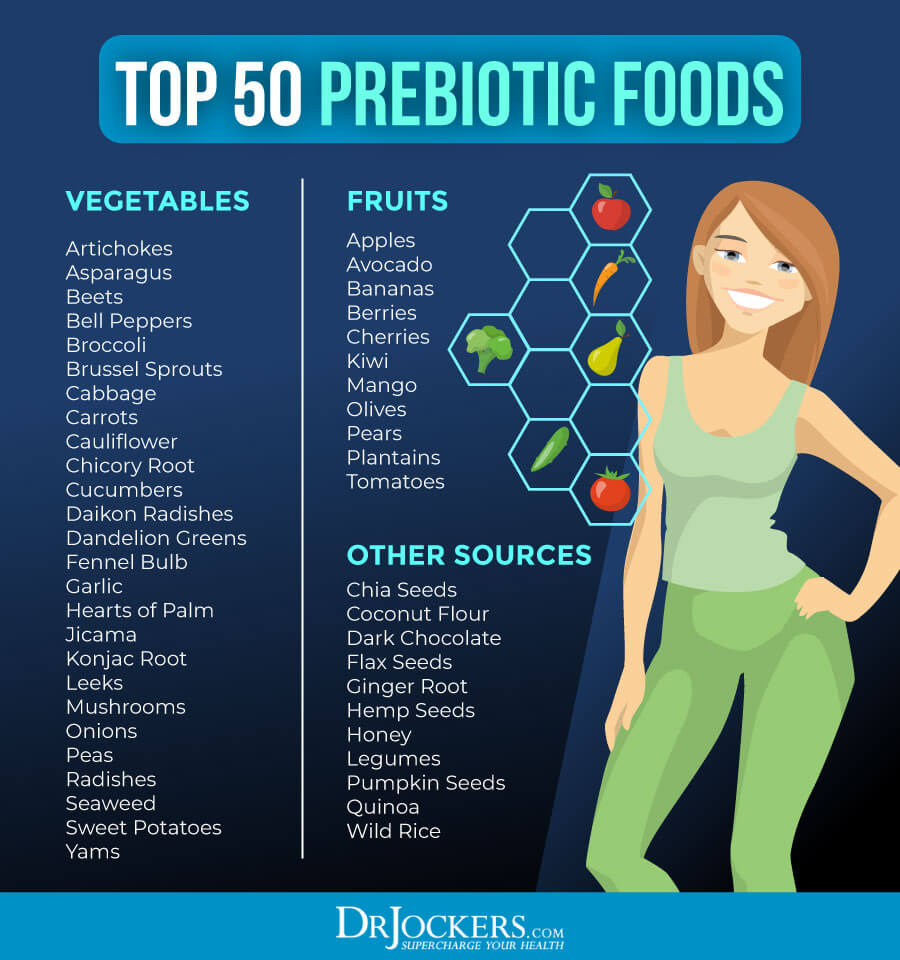
Twelve Steps to Keep Your Gut Healthy:
- Avoid Processed Foods and Eat an Anti-Inflammatory Diet: Processed foods contain dangerous environmental chemicals that alter the microbiome and favor the development of bad bacteria and yeast species.
- Drink Filtered Water: Only drink water that has been filtered – ideally through a high quality carbon filter or even better through a reverse osmosis system system.
- Consume Lots of Small and Medium Chain Fats: Small chain fats (SCFAs) such as butyric acid and medium chain fats (MCT’s) like caprylic and lauric acid are powerful support for the microflora. You find butyric acid in grass-fed butter and ghee and caprylic/lauric acid in coconut oil.
- Anti-Microbial Herbs: Some herbs such as oregano, thyme, peppermint and basil help to kill off bad microbes and favor the development of healthy microbes. Consume these generously in either a fresh, dried or essential oil form on a daily basis. I use GI Clear with my clients to help weed out the bad microbes.
- Practice Intermittent Fasting: Go a minimum of 12 hours between meals overnight. Try to work your way to 16–18 hour daily fasts. Be sure to drink as much clean water as possible in order to flush your system and save off hunger.
- Drink Coffee or Tea with Butter: Coffee and herbal teas contain powerful antioxidants that favor the development of a healthy microbiome. Be sure to get organic varities and use grass-fed butter/ghee and coconut oil in them in order to get more small and medium chain fats.
- Use a High Quality Probiotic Supplement: Taking a high quality probiotic on a daily basis is especially beneficial to improve your gut health. I recommend Probiocharge as a general wellness probiotic and SBO Probiotics – Ultimate for challenging digestive health conditions.
- Consume Healthy Prebiotic Foods: This includes dark green leafy veggies, asparagus, leeks, carrots, onions, garlic, radishes, artichokes and jicama. Include these in your daily diet. If you have an increase in gas and bloating consider reducing certain FODMAP groups. Read this article for more info.
- Move Your Bowels: You should be having 2–3 solid bowel movements daily in order to flush out all the food you consumed the day before. You want to eliminate food waste with a 12–24 hour period or the material becomes a breeding ground for bad microbes. If you are having trouble with bowel motility, follow all of these steps and drink extra water and add in 10 grams of L-glutamine
- Carminitive Herbs: Carminatives are herbs that stimulate the digestive system to work better. These herbs contain a high content of volatile oils that are effective at expelling gas and easing griping pains from the stomach and intestines. These herbs also tone the mucous surfaces & increase peristaltic action within the esophagus, stomach. This peristaltic action propels food and wastes through the system. The major carminative herbs include coriander, cinnamon, ginger, juniper, anise, fennel, cloves, caraway, dill, peppermint, thyme and licorice. These carminatives are often combined with aloe. Aloe is a cathartic herb that increases intestinal transit time and is used to alleviate constipation. These herbs help to tone down the powerful gripping effect that aloe often promotes in the gut. This combination helps stimulate effective and comfortable stools for those with chronic constipation.
- Smooth Move Tea: Used for thousands of years to get your “movement” moving again, senna works by gently stimulating your intestines and aiding your body’s natural elimination process. This tea combines senna the carminitive herbs fennel, coriander and ginger to reduce the potential for unpleasant feelings like cramping. Smooth Move tea is best taken at bedtime to help improve bowel movements the following morning.
- Gut Repair Powder: If you are struggling with leaky gut issues, consider using Gut Repair Powder and/or a straight L-glutamine powder (if you struggle with Aloe Vera, DGL and arbinogalactan fibers as some with SIBO do). I do often recommend 20+ grams of L-glutamine to support individuals recovering from severe leaky gut syndrome
- Digestive Support Pack: If you have mild-moderate digestive health issues, than I would recommend using our basic digestive health support pack here
- Utilize an Advanced Leaky Gut & SIBO Support Supplement Program: If you have moderate-severe digestive issues than I would recommend using an advanced SIBO support supplement program and strongly considering working with a natural practitioner who is trained in helping people overcome SIBO naturally.

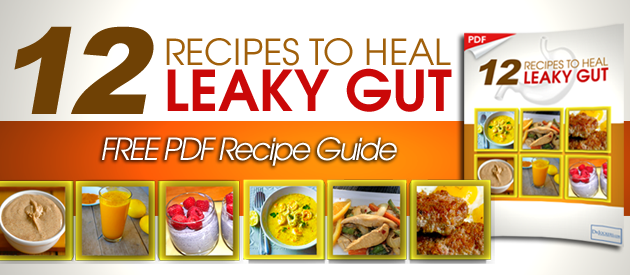
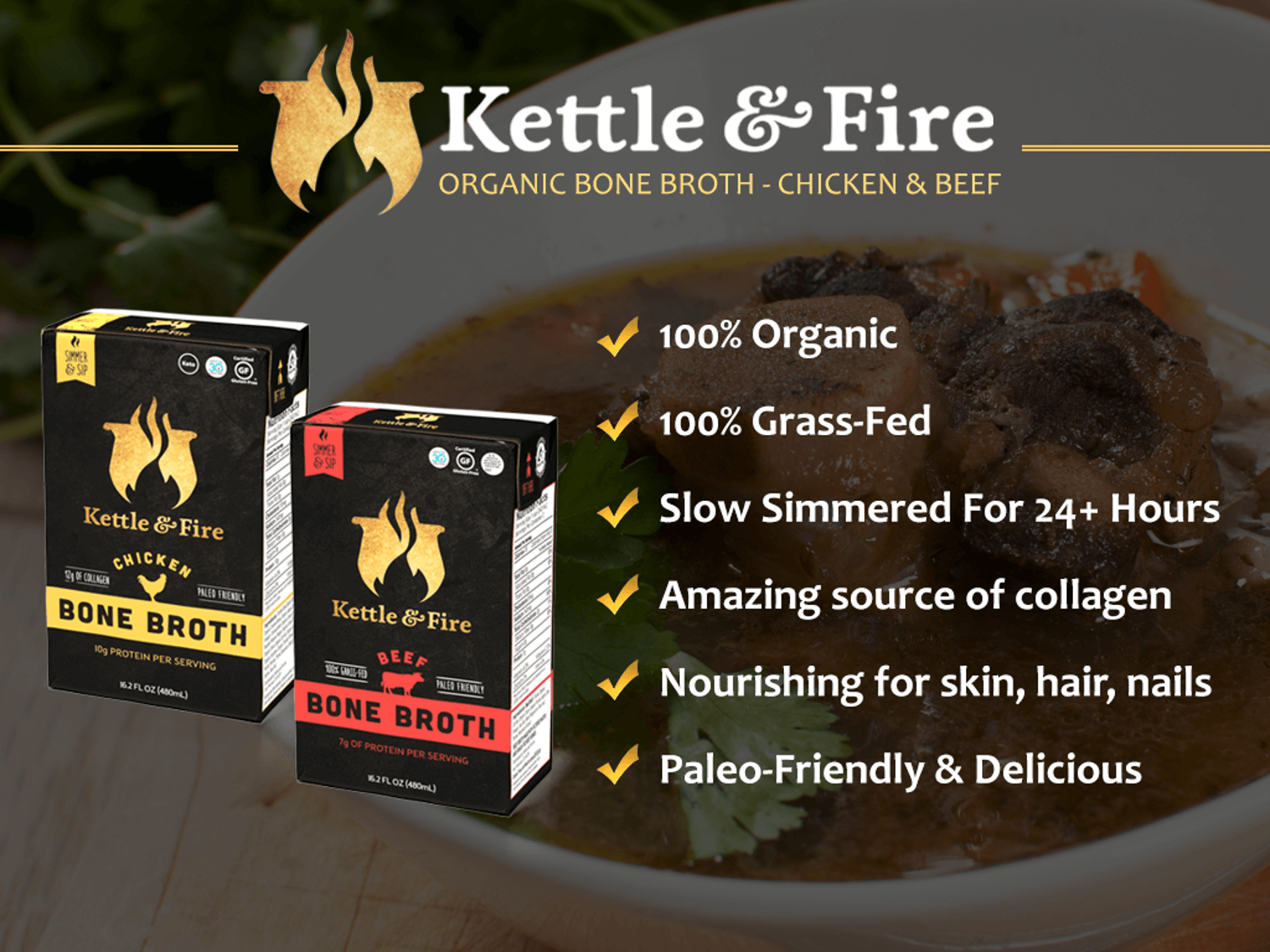




What are your thoughts on resistant starch? It seems to have gotten a lot of press as of late, even in the paleo sphere, on how it can help repopulate the good flora and flush out the bad, as well as ease constipation and blood suagr issues. However, while some tout those benefits, other, say the opposite, like I can feed pathogens (Sibo, klebsiella etc), cause wt gain, etc
Most supplement with raw potatoes starch, 2tbs bid. Or eat green bananas and other rs foods.
Would love your thoughts!
Stacy, it really depends upon the health of the gut. If someone has Candida overgrowth or serious dysbiosis. In this particular case, I recommend starving them out. If someone has a healthier gut than they can handle some of the starch.
For me personally, I don’t do well with these starches, I use ground chia as a great form of fiber for improving bowel movements and grabbing up toxins.
What about if you already have adrenal fatigue? Onions and garlic cause problems with this condition and you tend to lack salt because you urinate it out. The Chinese doctor said that this is due to the organs switching down and reducing in size. She said it is important to keep the bowel open at this stage by eating congee. Would chia do the same job?
Arthur – onions and garlic are not necessarily bad for the adrenals. Not sure where you got the information. Most people tolerate them quite well, there are some who have a sensitivity to them. On a ketogenic diet you will lose sodium and that is why I do recommend adding salt to the bone broth. Chia is fantastic and I recommend that for the reinnoculation phase.
Hi Dr Jockers,
A nice succinct article. What about the stomach and hcl, as well as pancreatic enzymes and perhaps ox bile for those with digestive issues? Also I have heard that coffee enemas might be problematic for those in adrenal fatigue. I’ve done them over the last 12 years and no noticeable results in my health. I still have SIBO, still have adrenal fatigue/hormonal deficiency, and list of other offspring health symptoms with the most prevalent is exercise tolerance and exercise recovery.
Thanks,
Yes, you are clearly in adrenal exhaustion. I think ox bile and pancreatic enzymes and betain HCL are very good and should be used. Hopefully, you are working with a functional medicine practitioner to address the SIBO and restore health to your body!
Dr. Jockers, when you say “Have 3 big bowls of bone broth with meat, onions, garlic and coconut oil in an 8 hour time frame”, the mention of the meat, onions and garlic is to reiterate what that bone broth has been made with not that you consume those solid foods in your bone broth, correct?
Hello!
I am currently following your plan and am also wondering what Tami above asked – do you eat the garlic/onions in the broth or do you strain them out??
In the beginning stages, you will need to strain them out as both onion and garlic are FODMAPS.
Hello! Is is essential that the vegetables in the re-inoculation phase are steamed as opposed to roasted?
Thank you so much!!!!
Hey Stephanie,
I have found that steamed works the best for making the veggies more tender and easier to digest.
Does this help with gastroparesis and chronic vestibular migraines?
Yes, it certainly can help with these conditions Adrienne. I would give it a shot!
Hello Dr Jockers
According to recent tests, I have parasites, candida and no good bacteria (lactobacillus). I have no symptoms. I do not eat processed foods, I have organic vegetables, and very little fruit. Your protocol states that foods should be gradually reintroduced and the body’s reactions noted. My body seems to be fine all the time, yet the tests show it is not. The parasites etc were found through a general screening test. I have been making kefir and fermenting vegetables for several years and assumed that my gut flora would be excellent.
Thanks
Hey Cher,
I would recommend trying this for 30 days and then retesting and seeing what happens. Blessings!
You mention that “If you heal the gut you are about 60% of the way towards optimizing the brain”. Any ideas on how to optimize the last 40% then? I mean can that lead to permanent damages in your opinion?
Yes there are many strategies and I discuss them in detail in my book that you can find here https://drjockers.com/books/supercharge-your-brain/
hi dr jockers,
when do you introduce probiotics and digestive enzymes in the programme ? 2nd phase ?
also can you suggest a protocol ? how many times a day and the timming
Hey Karan,
Yes, phase II for probiotics and digestive enzymes. I recommend doing 2 caps of probiotics in the AM and 2 caps before bed and 2 caps of digestive enzymes with each meal.
thanks a lot, also could you suggest some brand here in uk , i was looking up on amazon uk , i found
biokult for probiotic
& solgar for digestive enzymes … there is one from bulk powders too called
digzyme which claims to have additive.
which one would you recommend ?
Karan,
I would look for Thorne and Life Extension products. These are very good.
Hi dr jockers,
by pasture raised do you mean free-range or organic chicken ? do you have a preference of one over the other ? i mean between free-range & organic ?
Pasture-raised is the best, organic is second best, free-range is 3rd and natural is 4th.
dr jock, thanks for putting out great stuff. should i avoid using natural sweetners like cocunut sugar or maple syrup or honey ? specifically in 2nd stage ?
Yes, only do stevia and/or monk fruit
thanks! you’re such a saviour. one more thing can i add black pepper, cardamom and garlic to the diet ? i see you’ve avoided garlic and black pepper in most of the items listed by you .. any specific reasons ?
I recommend adding back garlic in the reinnoculation phase and see how you do with it.
hi, ive been on your programme for a month, my bloating is stable but im not passing any bowels, this is worrisome ? im using probiotics and digestive enzymes .. as a result sometimes i get headaches because of gas build up, have you seen such cases of no bowel movement in intial month ? should i use laxatives to relieve syptoms ?
Sorry to hear about this Tomas. I highly recommend using magnesium in water. I will put 2-3 scoops in 32 oz of water and drink this. I think you will move your bowels well. https://store.drjockers.com/collections/top-sellers/products/brain-calm-magnesium
Additionally, here is a helpful article: https://drjockers.com/12-ways-to-overcome-constipation/
hi do you recommend using spirulina in the 2nd stage as a protein source ? instead of hemp seeds. Im slightly wary of seed allergy
Yes you can use both spirulina and/or hemp seeds. If you are weary of a seed allergy than definitely avoid the seeds.
Hello Dr Jokers
I have anal fissur and inflammation of the rectum.It has been going on for 3 years.I take psyllium or inuline to move the bowel and soften them.I am a vegetarian,I do not eat sugar or junk food.What can you recommend to heal my inflammation.
Sorry to hear this Nicole, I would highly recommend following this protocol in the article.
Hello Dr Jockers
I will try the protocol,I was wandering if some of the essential oils in the reset phase should be put in enteric capsule so they reach and reset the intestine.Also can bone broth with green be used instead of bone broth pure in this phase,Thank you for answering.
Hello Doctor,
Very informative article, thank you. I have been having issues with my stomach and gut since almost 1 year now and I have consulted many people. a good friend advised me to clean the liver with Silybum marianum, a food supplement. Do you think that this is ok while trying to heal my gut?
I would really appreciate you advice.
Thank you
Yes you can do silymarin which is milk thistle.
I am going to start this plan this weekend. Do you recommend any other supplements? I have read on other articles about L-glutamine, enzymes, etc. Also, a Doctor has prescribed me probiotics to take, and they are just “cvs brand” 20 billion. Should I incorporate these during the probiotic lifestyle, reinnoculation phase, or never? Thank you.
1. more thing, do you have a bone broth recipe?
much thanks
Hey Halina!
Although not absolutely necessary, for the best results I cover many of my top supplements for this here: https://drjockers.com/6-steps-to-rebuild-gut-flora-metabolism/
The probiotic I suggest for people having a lot of GI issues is mentioned in that article as well. I would suggest using that in the reinnoculation phase!
As for the bone broth recipe we have a chicken broth recipe
https://drjockers.com/homemade-chicken-broth/
and a beef stew recipe
https://drjockers.com/supercharged-beef-stew-2/
Blessings!
Hi Dr. Jockers
I am following your protocol and I am feeling much better already after 2 weeks! Do you recommend using raw apple cider vinegar as well? I have been taking 1 tsp in water in the mornings but I am wondering if I should be taking more daily.
Thank you!
Yes Alissa, you can use small amounts of apple cider vinegar in the Rebuilding phase! You can work your way up to 1 Tbsp.
Dr Jockers,
Would you follow the same 3 step protocol for a not-yet menstruating 13 year-old girl? Or alter it? Thank you
Yes, instead of doing the broth fast in the beginning, perform a liquid nutrition reset doing things like the gut healing shake here: https://drjockers.com/blueberry-gut-healing-protein-shake/
Younger children do not do well with fasting so instead doing liquid nutrition and anti-microbials can be beneficial. You can email michael@drjockers.com with any other questions you may have!
I have leaky gut and adrenal fatigue. Should I do this protocol or your leaky gut protocol?
Hey Cong, you can follow this protocol! I would say follow the strategies outlined in this article for about a month: https://drjockers.com/25-lifestyle-strategies-to-heal-adrenal-fatigue-naturally/ then follow that up with the digestive health protocol.
Hi Dr Jocker, I’m in the process of doing a detox and wanted to know if I were to use binders for collecting heavy metals and salt water flush/colonics in between which steps would they be used?
Hey Ron, you could use these throughout!
Hi Dr Jocker,
I have just started this protocol and was wondering should I be taking oil of oregano in every serving of broth 1-2 drops per 4oz of broth? Also any tips for the headaches?
You can definitely do that Brian. You will want to support the liver and use a binding agent in the gut to prevent symptoms of die-off reactions. In our store that would be ThyroLiver Protect and Activated Charcoal
How long should one stay on the REBUILD phase?
10-14 days Lindsay! You could even extend it up to a month if you wanted.
Hello Dr Jockers,
Thanks for you amazing work. I’m 40 year-old male with digestive issues and joints pains. Over the last 10 years, I stated a low inflammation diet that evolved toward a restricted paleo diet more recently. I had to basically eliminated all foods that might cause sensitivities (gluten, grain, diary, egg, nightshades, etc.). I have now resolved 98% of my joint issues but i’m still prone to tendonitis. My digestion has greatly improved also. 2 weeks ago I started a Ketogenic diet and Intermittent fasting. I love, love the mental state and feel good ont it. However, I started to have a mild pain in my lower right rib cage which I diagnose as a “sluggish gallbladder” or gallbladder stones (never add this before). Reading your articles, it is clear that I have low HCL and most likely SIBO. I will follow your 25 Ways to Improve GallBladder Health and your recommendations for low HCL. However, I was wondering if I should start your digestive health protocol as well? If I have gallstones, would getting on a 5 day diet increase the concentration of the gallstones and potentially create bigger problems thereafter?
Or should I continue the Keto diet and Intermittent Fasting for 1 month and see the my gallbladder issue resolve by itself when I’m fat adapted?
Hey Vincent, you could try starting with the gallbladder flush, followed by the rest of the strategies in that article. Afterwards you could incorporate the regain your terrain protocol to address your digestive issues! Reach out to michael@drjockers.com if you want to work on a health plan one-on-one!
Hello, how long should the rebuilding phase (after the fast) last? I didn’t see it in the article. Thanks!
Hey Kerri, it is illustrated in the graphic under the header “The 3 Phase System to Heal the Gut” and is 10-14 days!
Hello there! I was wondering if there were recipes available for the rebuilding and re inoculation stages? Thank you!
We have a full meal plan and recipe guide laid out in our Digestive Health Restoration Program here! https://drjockers.com/the-digestive-health-restoration-program/
Hey Dr. Jockers,
Thank you so much for this resource! I’m on day 4 of the reset phase for self-diagnosed leaky gut & candida overgrowth and I’m really optimistic about experiencing relief. In the rebuilding phase, could I use organic chicken broth instead of chicken bone broth and add multi collagen protein powder? Or would you recommend I stick to organic chicken bone broth? Thanks again!
-Jordan
Also – should I continue water with apple cider vinegar after the reset phase? Or just start drinking plain water? Thanks!
Yes if you are feeling good with it Jordan
Yes this can be very helpful!
Great outline for recovering from Sibo, Leaky Gut and severe CNS symptoms blurry vision and other degenerative issues but very glad I found this website with clear instructions on what to eat at each stage of the recovery program .. just wanted to know if this program can commence during or after Refaximin course ?
many thanks for sharing this very instructive and clear programs for recovery .. hopefully for a 75 year old who’s never found the complete instruction guide !
Yes you can do this program around taking your medications.